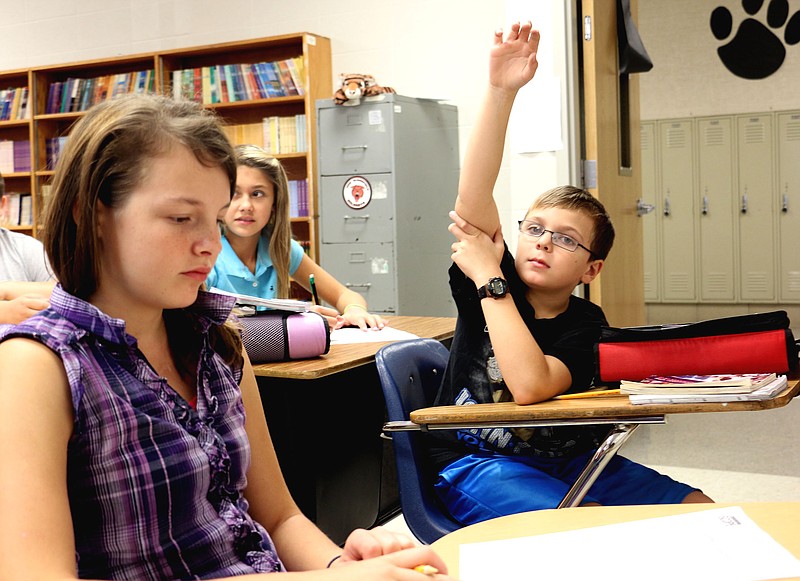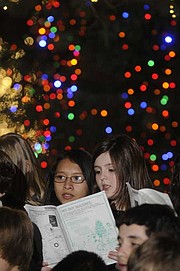For all grade levels and subjects except one, New Bloomfield Middle School and High School saw increases

in the percent of students scoring proficient or better on the Missouri Assessment Program (MAP) tests from 2013-14.
Of the students who scored below basic and basic overall, 70 percent read below grade level, MS/HS Principal Jeremy Davidson said. And, of the students who scored proficient or advanced proficient overall, 80 percent read at or above grade level. That shows, Davidson said, how critical reading skills are.
"A big focus this year is reading in the classroom, across content," Davidson said. "We know that reading is needed across all avenues."
As part of that focus, the middle school and high school will use Renaissance Learning STAR Reading program. Davidson said the school is increasing the amount students in sixth through 12th grade have to read each school year. This year, students are required to read two books per quarter. The books must be at or above the student's reading grade level.
This increased focus on reading comes from the schools' examining data and test scores the past few years. Although the middle and high school had mostly increases this year, Davidson said they want to continue to get better.
In English/language arts, sixth grade, eighth grade, English 1 and English 2 saw increases from 2013-14 in the percent of students scoring at least proficient. Seventh grade English/Language Arts is the only area which the school saw a decrease in the percent of students scoring at least proficient from 2013-14. In 2013, 37.5 percent of seventh graders scored proficient compared to 31.7 in 2014. However, 11.7 percent of seventh graders scored advanced in 2014 compared to just 8.9 percent in 2013.
In math, sixth grade, seventh grade, eighth grade, algebra 1, algebra 2 and geometry all saw increases from 2013-14 in the percent of students scoring at least proficient. In science, eighth grade and biology 1 both saw increases from 2013-14 in the percent of students scoring at least proficient. And in social studies, American history and government also both saw increases from 2013-14 n the percent of students scoring at least proficient.
The school's largest percent increase from 2013-14 in students scoring proficient or advanced was eighth grade science. The percent of students scoring at least proficient for eighth grade science jumped 25.4 percent from 2013-14 while the percent scoring basic or below basic dropped 12.4 percent.
Even in content areas in which the middle school and high school did well, Davidson said there is always room for improvement.
He said staying up to date on the latest research available is important for schools everywhere.
"If we are doing the same things we were doing 20 years ago in education, our kids won't learn," Davidson said.
Updated research regarding teaching techniques, assessments, etc. helps schools provide students with better opportunities for success, Davidson said.
He added that assessments are valuable for the school in helping it improve. New this year, student reading levels will be assessed each quarter through the Renaissance Learning STAR Reading program.
Teachers in the Middle School and High School will have extra reading this year, too. Teachers will read four books over the course of the year and participate in small group discussions on each book throughout the year. The books focus on teaching technique and inspiring students.
The data


